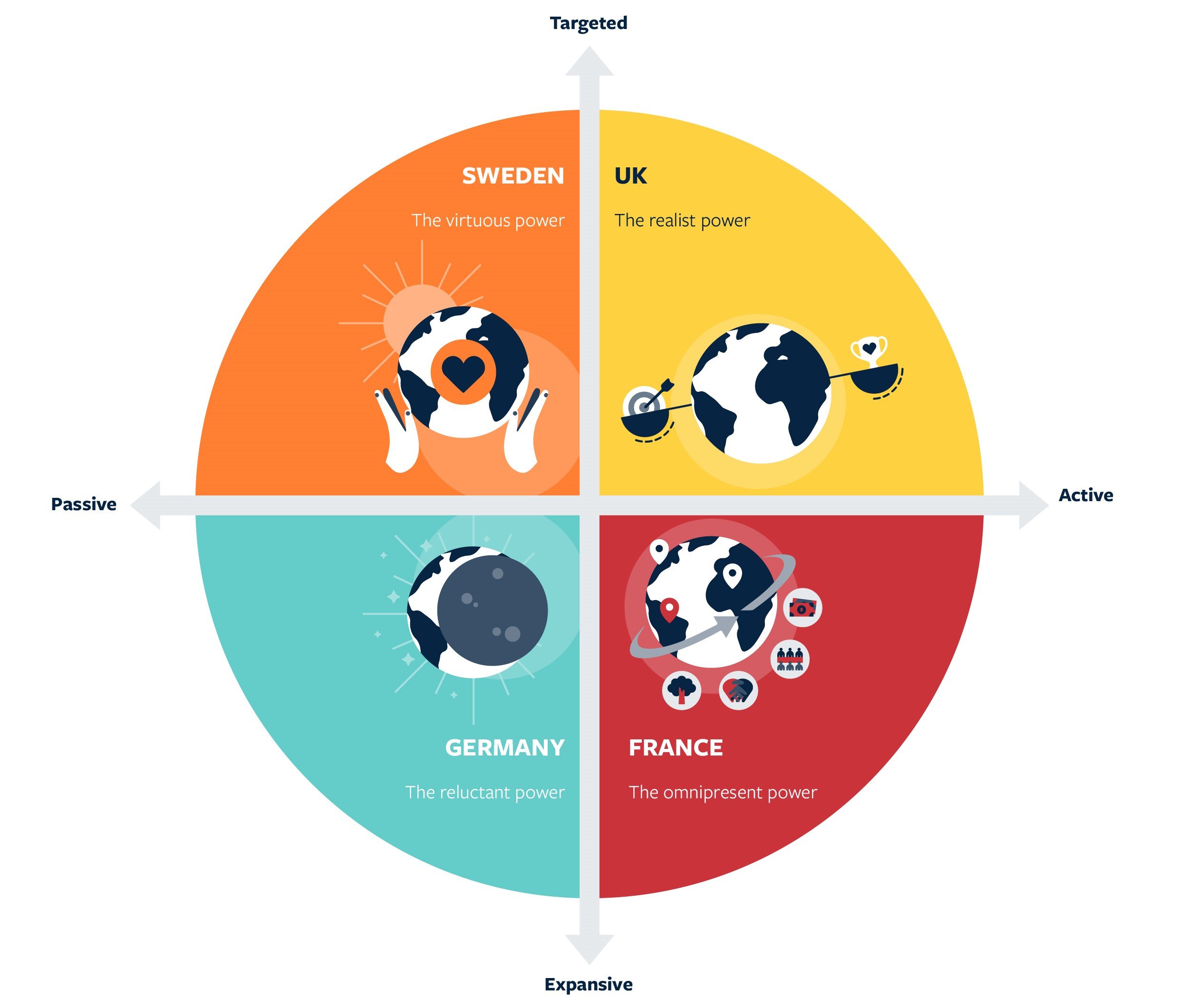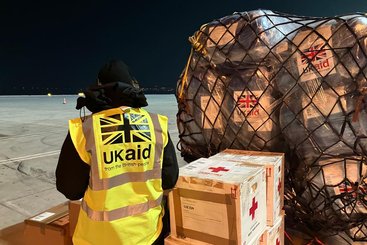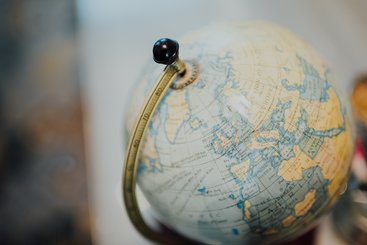Amid the polycrisis of Covid-19, the conflict in Ukraine and the intensification of new Cold War geopolitics, donors face growing pressures to leverage development cooperation to secure their foreign policy goals.
What do such pressures foreshadow for the ways that development and national power are brought together? Is there a model for how to craft development power in a world where official development assistance (ODA) is no longer as salient as it once was? What are the emerging donor strategies for cultivating development power, and what risks and opportunities might these strategies bring?
In our new ODI report we explore such questions, looking at how several European donors are adapting to a world of radical uncertainty and geopolitical rupture by leveraging a range of development cooperation tools for national influence.
Our study shows the distinct personalities that each country brings to the art of crafting their development power: France as an 'omnipresent power', Germany as a 'reluctant power', Sweden as a 'virtuous power' in transition and the UK as a 'realist power'.
There is no single development superpower in the world today. Each of these four countries exhibits unique strategies for cultivating national influence through the use of development cooperation instruments.
Through this analysis, we achieve a clearer understanding of the ways in which development cooperation and national power intersect today, and the downstream consequences (both good and bad) that instrumentalisation can bring. Donors are rapidly transitioning to a more explicitly 'interest-driven' development cooperation. A legitimate rationale and practical pathway for crafting smart development power is now urgently needed.
Some of the report's highlights can be reviewed below. We outline four key trends relating to the use of four types of development instruments.
1. Concessional aid (ODA)
Size matters when it comes to your aid budget, but size does not guarantee power. Germany's desire for influence has not matched its considerable aid commitments, and it remains a reluctant development power. Until quite recently, commitments to the 0.7% ODA/GNI ratio, or beyond, have also been a source of moral power for the UK and Sweden. However, the collapse of these normative targets in both countries has come at a cost to donor credibility, making it a fragile source for influence.
2. Economic cooperation
For some donors, economic cooperation beyond just aid is a way to expand influence with middle-income countries (MICs) and to cultivate influence with lower-income countries. The UK’s model of 'realist power' has put a greater emphasis on trade and investment opportunities as a secondary benefit of development cooperation, but alongside France, this economic cooperation is moving further into geo-economic diplomacy. The use of private sector instruments and the prominence of national development finance institutions (DFIs) in the UK and Germany are sources of national influence, as well as an indirect channel for economic engagement with MICs.
3. Multilateralism
Multilateral engagement is a critical channel for European donors to cultivate power. Pooling resources through multilateral development banks, the UN, and – for EU donors – development initiatives like Team Europe can be a powerful platform to exercise voice and punch above individual member countries' weight.
Core contributions to multilaterals can be a real source of moral power. France as an 'omnipresent power' derives influence from its membership to many global institutions and unearmarked multilateral contributions. The UK and Sweden, while historically large providers of multilateral finance, show a greater tendency to earmark contributions to gain influence.
4. Global Public Goods (GPGs)
GPGs are a growing priority among all four donors, and a recognised source of global influence. Leadership in the climate space has been a source of moral power for Germany and France. GPG investment can bring commercial and diplomatic returns, but the shift in focus has also incentivised greater earmarking as well as a proliferation in vertical funds, increasing complexity in global governance.
Five ways to craft smart development power
Ultimately, there is no single development superpower: each donor is charting its own path in securing influence.
Development done well is a source of geopolitical power. Diplomats should cultivate development as a safe policy space for building solidarity with Southern partners.
‘Doing development well’ will look different depending on the donor, yet it requires each to be smarter about how they cultivate and nurture their development power. Crafting smart development power can be done in five key ways:
- Cultivate consistency and reliability to show solidarity with the Global South: Building trust and long-term credibility with development partners is a critical resource for influence. Sharp shifts in policy and aid cuts can easily damage credibility.
- Quantity of aid is a necessary but insufficient condition for development power: High aid budgets or aid ratios do not automatically translate into influence, and when they do not meet widely held expectations, they can actually undermine reputational legitimacy.
- Ensure institutional coherence and competency: Non-financial resources such as technical competency, institutional autonomy, long-termism and clarity of mission are also sources of credibility and influence.
- Do not underestimate the importance of multilateral engagement: Multilateral membership and collaboration are key platforms for influence and impact for smaller and mid-sized powers.
- Work towards impact first, influence second: Development done well is a source of influence with partners and peers and should be preserved as a space for international cooperation.





